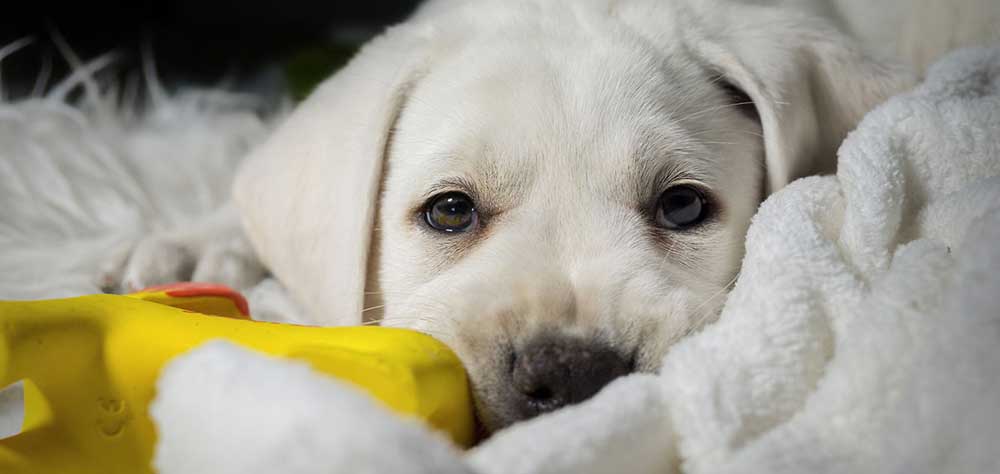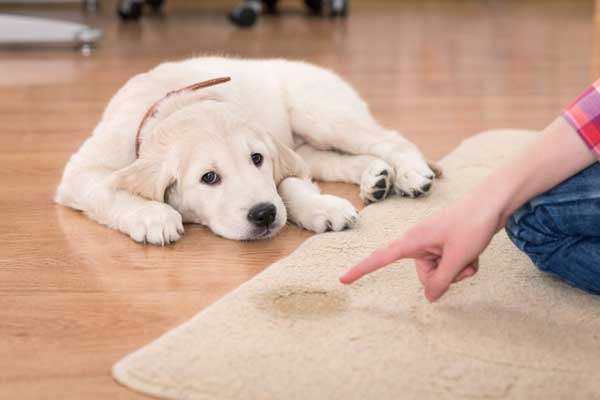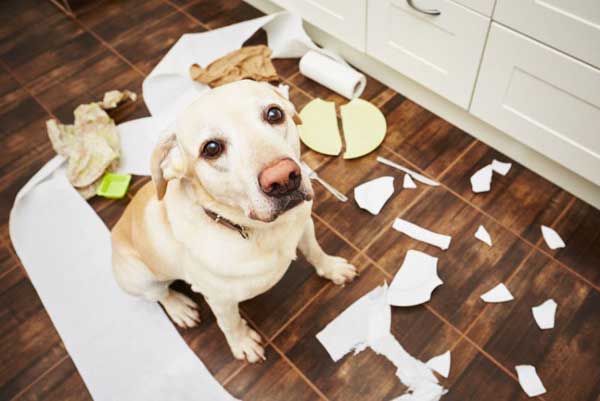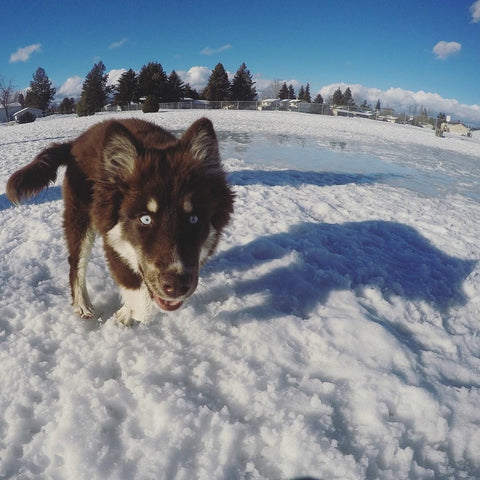More
Use these cold weather tips to keep your dog safe and healthy this winter.
More
Is it too cold outside for my dog?
If your pup show signs of being too cold or shivering, it’s time to head inside. Some dogs - such as small, old, young and thin coated dogs - are more susceptible to cold temps, even at 32 degrees Fahrenheit. Never leave your dog alone outside in cold temperatures. Dogs are at risk of hypothermia and frostbite if temperatures drop below 20 degrees Fahrenheit. Dog jackets and boots can help to protect your fur friends from chilly snow and ice!
Be aware of winter poisons.
Rock salt used for melting ice on roads can be harmful to your pet. Just walking on de-icer can burn or irritate your dog’s paws and skin. Ice-melt chemicals may be toxic and can cause harmful side effects if ingested, such as vomiting, diarrhea, weakness, confusion, staggering and seizures.
You can protect your dog's paws from snow, ice and rock salt with dog boots or dog paw wax. Try to avoid areas known for using ice-melt chemicals and be sure to wash your pup's paws after a walk if his/her paws are exposed. Be sure to look for pet-safe ice melting products if you use de-icer at home.
Antifreeze is another common hazard for dogs, especially during the winter months. Even a few licks of antifreeze can be fatal to smaller pups. Antifreeze poisoning symptoms include vomiting, diarrhea, weakness, fainting, confusion, staggering and seizures.
Keep up on grooming.
Be sure to continue your dog’s regular grooming rotation and spend more time drying your dog, since cold temps make it difficult to dry off outside. Some fleas and ticks survive in the winter by hunkering down to keep warm and may
It’s also important to trim your dog’s nails more often during the winter months if she spends more time indoors. Her paws will have less contact with the regular friction from outdoor surfaces, which can lead to longer and possibly overgrown nails. Remember to maintain your dog’s nails to avoid putting them at risk for overall discomfort and health issues.
If you prefer to personally groom your dog, check out our convenient Grooming Arm, Rail and Pad attachments for Collapsible and Stationary Impact Dog Crates.
Don't forget about flea and tick protection.
Some fleas and ticks can survive through the winter. Despite the cold weather, it is still important to continue using flea and tick protection for your dog, as well as regular grooming. Fleas and ticks like to find warm places to hunker down including on your dog, carpet, below your house or on outside dog beds.
How to exercise your dog indoors.
It's tempting to bundle up on the couch with your pup and watch Netflix on cold days. If your dog would rather stay inside than play in the snow, then use this opportunity to your advantage. Just because it's winter time, doesn’t mean you have to hibernate your dog’s fitness exercises. Here are a few ideas for indoor exercises with your pup:
- Encourage your dogs to run up and down the stairs for cardio. Bonus points if you exercise with them.
- If you have a solo dog at home, schedule a play date with a fur friends to continue socialization. It's also refreshing to break the habit of hibernation mode or "cabin fever."
- Teach your pup a new trick to exercise the mind too!
- Set up agility courses. You don’t need special training equipment to set obstacle courses for your dog. Arrange chairs, tables and blankets as a course, or look online for ideas to build DIY agility equipment.
- Teach your dog to use the treadmill. Regardless if you use a standard treadmill or dog-specific treadmill, your dog can benefit from walking and running while indoors. Walking on treadmills can be awkward at first, even as a human, so introduce this machine slowly and safely with your dog.
- Canine conditioning. All of the exercises involved can help improve your dog’s balance, muscle strength, memory and agility.
Don't forget these cold weather tips to keep your dog safe and healthy this winter. Happy Holidays!
( Photo Credit: Jaimie M. )








